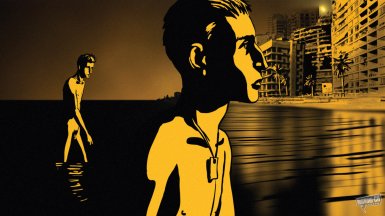- Technology in Waltz with Bashir
- CGI and CMI in Documentary
- Conclusion- Documentary in a New Light
- Citations
Animation is not only a film form or technique that stands alone but it can also be used to further other forms. A closer look will be given to animation in documentary films and the freedom in the medium that it gives the directors; specifically in Ari Folman’s Waltz with Bashir. Animation Documentary needs to be given a voice.
Documentary attempts to be an objective interpretation of reality, but will always in some way remain a subjection of one’s reality.

Waltz with Bashir by Ari Folman, captures how animation can replace live action and still convey a realism in a documentary. The animation in Folman’s film is a tool for the viewers to experience other dimensions that film couldn’t otherwise capture. Like, dreams and stream of consciousness. This is critical to the films’ reception, since it’s about war the audience may have a hard time connecting with interviews or photographs. To visually be shown what the minds of the soldiers are experiencing allows us to live the moment with them. In trying to understand why Folman chose to use animation, A. Scott, a film critic puts it very well. “The freedom afforded by animation-a realm where the inconvenient laws of physics can be flouted at will-allows Mr. Folman to blend grimly literal images with surreal flights of fantasy….” (Scott, 2008). The creative freedom that animation gave Folman was to move through the different dimensions that could not have been done as effectively otherwise. Folman’s aesthetic choices turned out to be extremely influential. In an interview with Folman he explains; “For me, it was very essential to bring young audiences to the theaters to watch the film because I thought that if this film could influence even one teenager making the decision not to go the war, it doesn’t matter where I did my job, I earned it” (Folman, 2008). Many doubted the success of Folman’s film but once released it was a great hit everywhere.